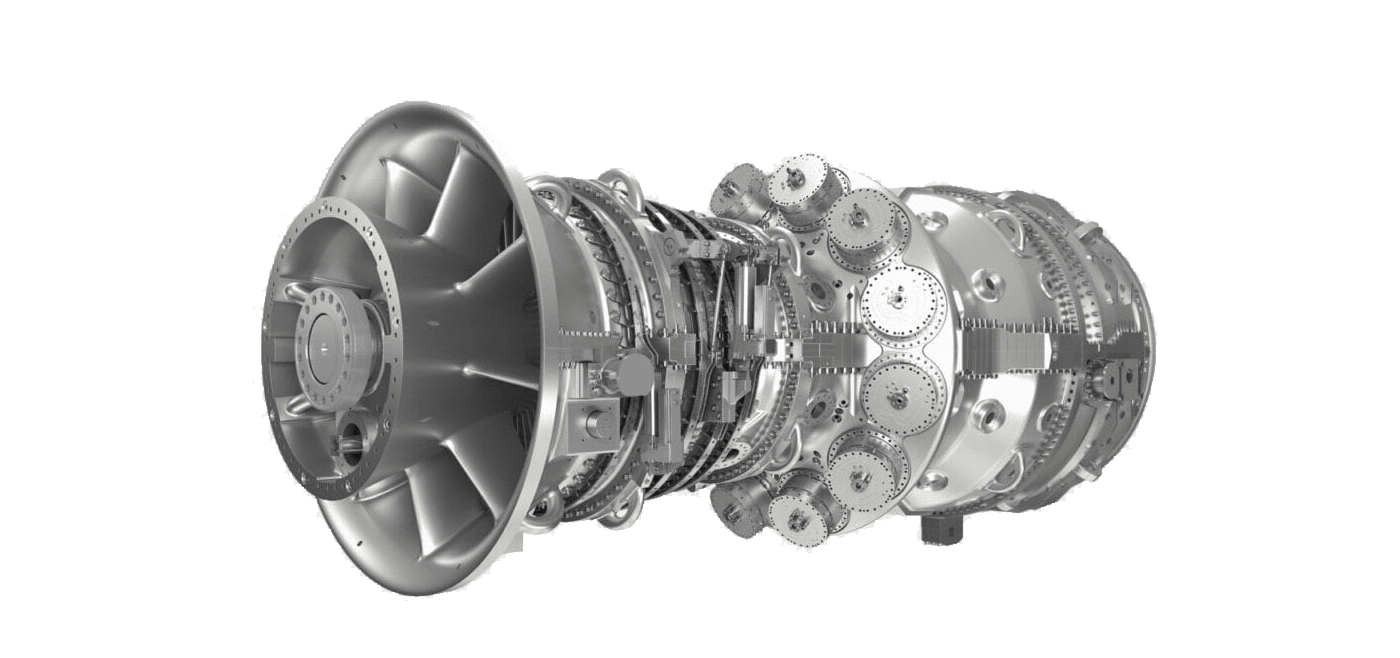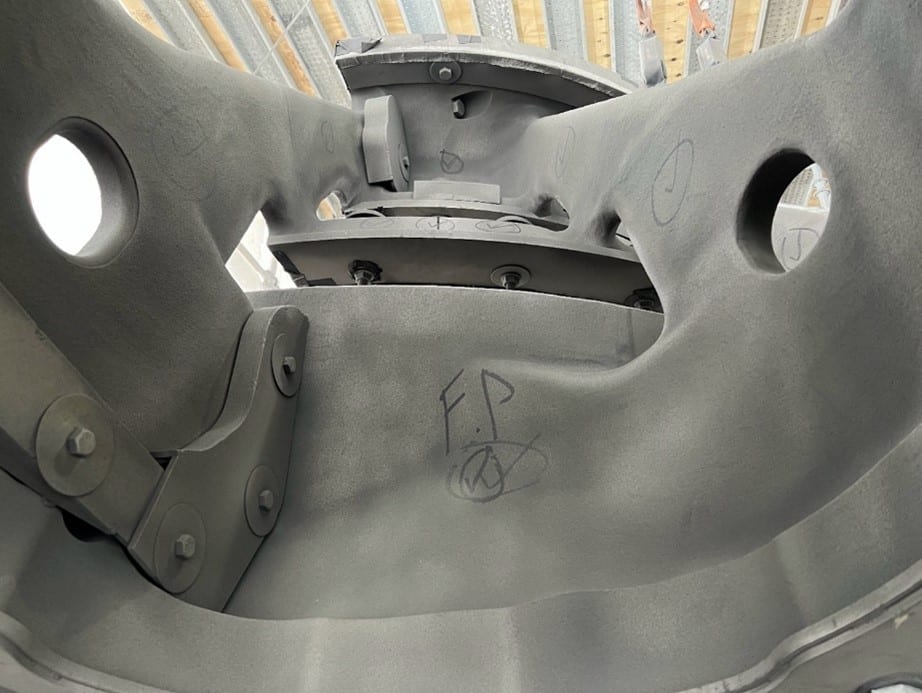Gas Turbine High-Temperature Corrosion-Related Spalling Mitigated
A major power utility in the southeastern United States faced severe operational challenges with its heavy-duty gas turbine. The turbine experienced high-temperature corrosion and related spalling, leading to frequent maintenance, forced outages, and operational inefficiencies.
The Problem: High-Temperature Corrosion and Spalling
The gas turbine, operating under extreme conditions with temperatures exceeding 1000°F, encountered significant challenges:
- Oxide Flake Spallation: Unprotected cast steel surfaces in the compressor discharge and combustor sections suffered from corrosion, generating oxide flakes that traveled downstream.
- These flakes clogged cooling channels, causing wear and premature failure of blades, vanes, and other critical components.
- Increased Maintenance and Costs: Frequent repairs due to component wear raised maintenance expenses and operational costs.
- Disrupted Operations: Forced outages were required to address damage, impacting overall plant reliability and performance.
Newer generation heavy-duty gas turbines are particularly susceptible to these issues due to their advanced design and higher operating temperatures. While some OEMs apply coatings during manufacturing, many deployed units remain uncoated, leaving them vulnerable to oxidation and spalling.

The IGS Solution: HVTS® Superalloy Cladding
Integrated Global Services provided a comprehensive and proprietary solution to address the corrosion challenges faced by the turbine. The project was executed during an April 2023 maintenance outage and included the following key elements:
Areas Treated
IGS applied HVTS® cladding to several critical components in the turbine:
- Compressor Discharge Casing (upper and lower halves).
- Outer Turbine Shell (upper and lower halves).
- Diffuser/Splitter (six segments).
- Inner Barrel (two halves).
- Arm-Way Covers (five units).
Execution Details
- Efficient Project Timeline:
Total on-site time: 8.5 days (17 shifts).
Critical path time: 3 days (6 shifts). - Surface Preparation:
Used Sponge-Jet blasting to ensure optimal surface cleaning with reduced dust and debris.
Followed SSPC-SP 5 – White Metal Blast Cleaning specifications for precise profiling. - Safety Measures:
The IGS ClearStream filtration system ensured compliance with hexavalent chromium exposure limits, maintaining a safe and controlled work environment.
Durable Protection and Proven Performance
Following nearly 8,000 hours of operation and 52 starts, a detailed inspection in May 2024 confirmed the success of the HVTS® application:
- Cladding Integrity: The protective layer remained in “as-applied” condition with no signs of thickness loss, spalling, or cracking.
- Oxidation Halted: High-temperature corrosion was completely eliminated in all treated areas.
- Operational Efficiency Restored: Reduced maintenance needs and fewer forced outages improved turbine reliability and performance.
These results demonstrate the long-term durability and effectiveness of IGS’s HVTS® cladding in harsh, high-temperature environments.

Conclusion
The IGS HVTS® cladding solution provided a permanent and cost-effective method to address high-temperature corrosion and spalling in the gas turbine. By preventing oxidation and wear, the solution extended the turbine’s lifespan, reduced maintenance costs, and enhanced overall operational efficiency.

HVTS™ Technology Advantages
- Proprietary Superalloy Cladding: IGS’s patented HVTS® material was specifically designed for high-temperature environments and validated through multi-year testing in collaboration with OEMs.
- High Velocity Thermal Spray (HVTS): The technology ensures dense, impermeable cladding with minimal stress on the substrate material.
- Custom Protective Isolation Tooling: Designed to shield areas not being treated and maintain critical tolerances during application.
Related Case Studies:
Free consultation with an IGS Subject Matter Expert
IGS is here to provide information, answer questions and create an effective solution for your needs.

